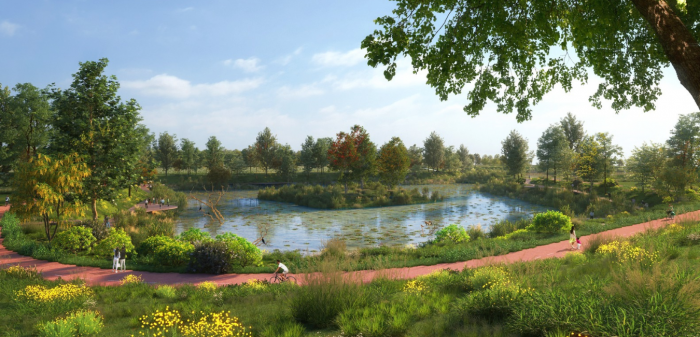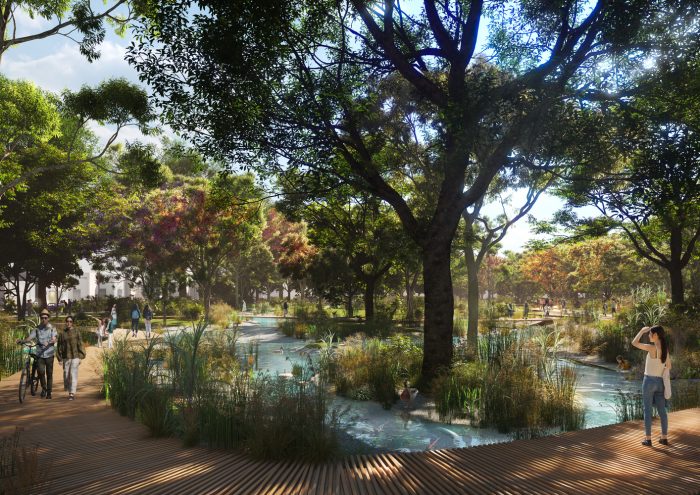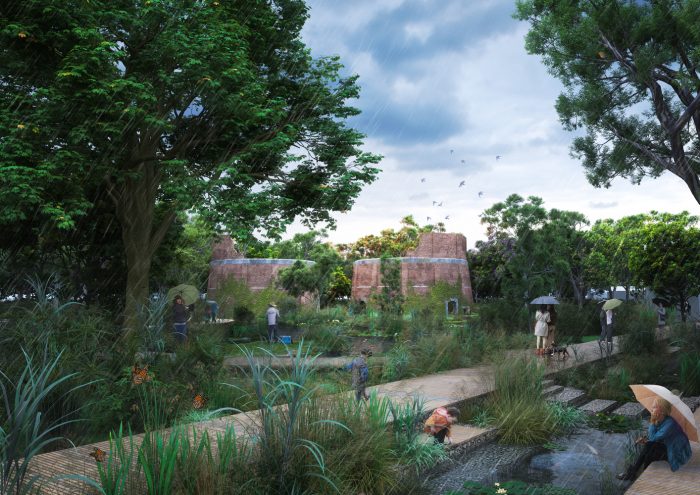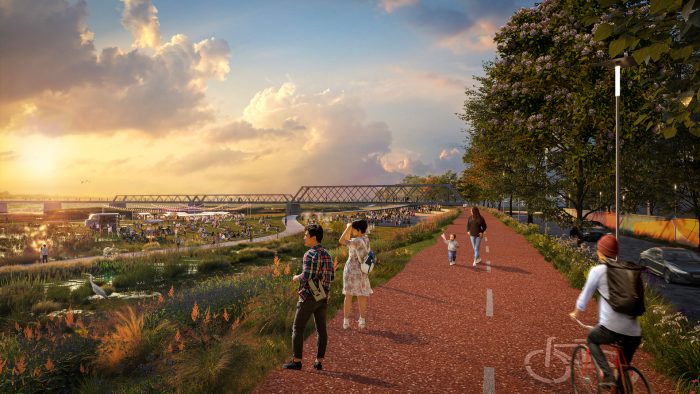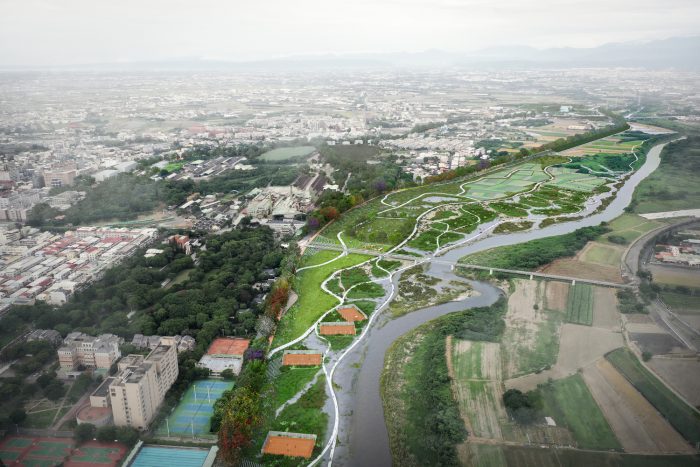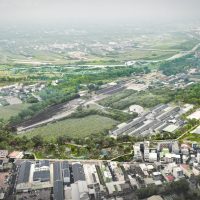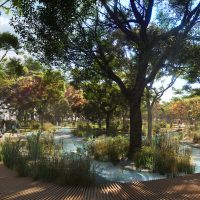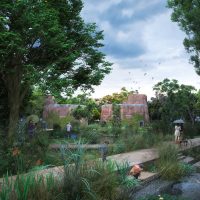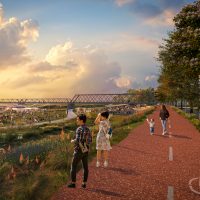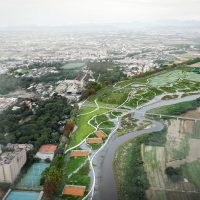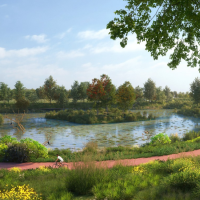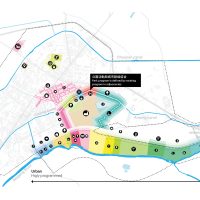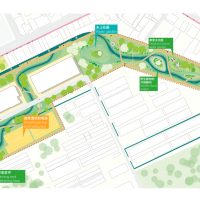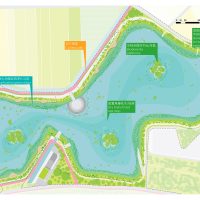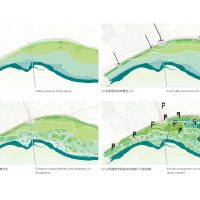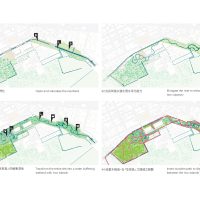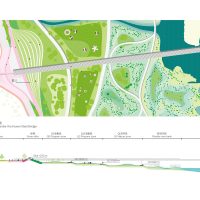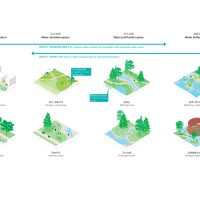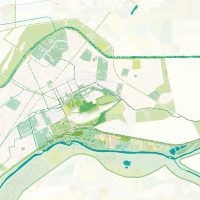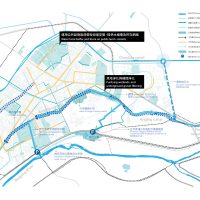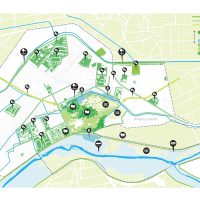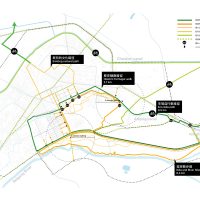MVRDV‘s Hoowave Water Factory has been chosen as the winning design by Taiwan’s Ministry of Economic Affairs for a large-scale renovation of Huawei’s Beigang River and Anqingzhen waterways. The project, which combines a strategic master plan and a landscape design, proposes to modernize the town’s waterway network by abandoning the merely monofunctional approach that manages and directs water.
Instead, the municipality will soon have a system that catches and stores water for future use while providing room for the river, environment, and urban life. The project should be finished by 2026.
“We open the river and canal embankments to the town by integrating aquatic interventions with mobility and cultural attractions,” says MVRDV founding partner Winy Maas. “Water buffers help to increase biodiversity and keep up with climate change by reducing runoff.
Our design makes riparian leisure spaces and cultural sites more accessible, resulting in a more meaningful link between people and environment and great resilience.”
Hoowave Water Factory’s Masterplan
The master plan provides the town with a comprehensive flood resilience strategy while improving the quantity and quality of the town’s available water. It also incorporates mobility networks, cultural facilities, and ecological infrastructure to establish new links between Huwei, its residents, nature, and the river.
Hoowave Water Factory’s Design Concept
The design prioritizes five goals: the new Huwei water system will be robust, ecological, connected, cultural, and feasible. It proposes adding a series of localized, naturally cleaned water buffers across the city. The bulk is put on more prominent, publicly owned facilities such as schools to simplify implementation.
It also intends to clean and naturalize the Anqingzhen Channel, an irrigation canal that runs through and beneath the city and has become a dirty and stinky wastewater gutter.
The cleaned and naturalized canal allows for the reopening of the factory’s unused areas, providing a public park space in the heart of town. By doing so, the Anqingzhen Channel can reclaim its former role as a major recreational destination.
The design creates linkages to the waterside, opening up the region between the river and the dike for other uses, such as observing decks and athletic fields, transforming the dike to the south of the town’s core into an inclusive urban space.
The usage in this area, now known as Beigang River Park, is carefully studied along many criteria: they synergize with town districts on the other side of the dike while also taking into account the projected frequency of floods at varying distances from the river.
Hoowave Water Factory’s Further Features
The plan details two other areas of particular importance in addition to the Beigang River Park. The Anqingzhen Waterland proposal demonstrates how a naturalized Anqingzhen Channel might become part of a forested park in the new zones of the Sugar Factory premises.
The water levels of the channel will change depending on the seasons, producing little isles for a variety of leisure activities as part of the city-wide flood management system meant to retain, filter, and utilize rainwater for leisure and biodiversity.
Furthermore, the Pinghe Lake design transforms the current flood detention pond into an environmental access point, a destination for walkers and bikers in the city’s suburbs.
Hoowave Water Factory prioritizes water quality and health alongside culture and business. Improved infrastructure and healthy biological systems, together with integrated cultural amenities, will enhance the river scenery, connecting the city and the natural environment in a way that benefits everyone.
- ©MVRDV
- ©MVRDV
- ©MVRDV
- ©MVRDV
- ©MVRDV
- ©MVRDV
- ©MVRDV
- ©MVRDV
- ©MVRDV
- ©MVRDV
- ©MVRDV
- ©MVRDV
- ©MVRDV
- ©MVRDV
- ©MVRDV
- ©MVRDV
- ©MVRDV


